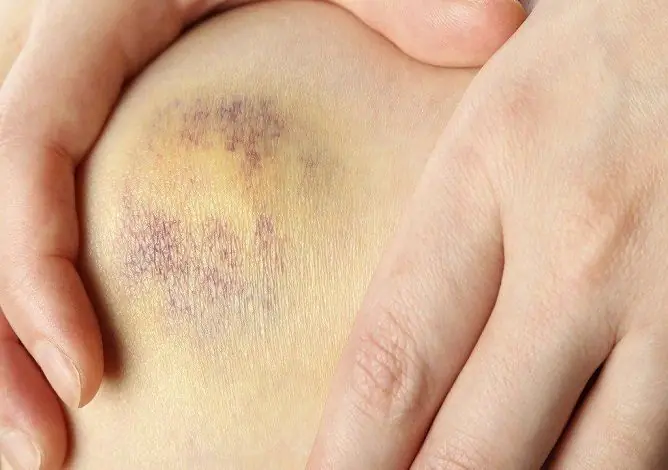- Author Rachel Wainwright [email protected].
- Public 2023-12-15 07:39.
- Last modified 2025-11-02 20:14.
Causes of stroke: the occurrence of acute disorders of cerebral circulation in men and women
The content of the article:
- Causes of a stroke
- Risk factors
- Most likely causes of stroke in women
- Most likely causes of stroke in men
- Signs of a stroke
- Video
The causes of a stroke, a serious illness in which the blood supply to a certain part of the brain is disrupted, can be age-related and physiological. Strokes occur in both men and women, from young age to very old age.
As a result of a violation of the blood supply, oxygen deprivation of the brain area occurs, as a result of which the nerve cells located in the area with impaired blood supply are damaged and die off. Together with them, those functions of the body are violated for which the area of the brain affected by the stroke is responsible.
Causes of a stroke
The main immediate causes of strokes are compression or blockage of blood vessels, leading to ischemia, and cerebral hemorrhage. Depending on this, two types of stroke are distinguished.

Hypertension is one of the most common conditions that increase the risk of stroke
Ischemic stroke - occurs due to blockage of blood vessels supplying blood to the brain, a torn off blood clot or blood clot. In rare cases, the lumen of the vessel is clogged with fat particles or air bubbles (fat and air embolism), blood clots from the left ventricle of the heart. Also, the vessel can be compressed by a tumor or a scar formed after an injury. As a result, the nerve cells of the area supplied by the damaged vessel stop receiving oxygen and nutrients. In some cases, neighboring arteries can take over the blood supply to this part of the brain, but most often, if you do not take timely measures, nerve cells die off. Ischemic stroke is the most common form of the disease, accounting for more than 70% of all cases of acute cerebrovascular accident. According to the mechanism of development, ischemic stroke is similar to myocardial infarction, just like it is accompanied by softening of the affected area of the medulla, therefore it is also called cerebral infarction.
Hemorrhagic stroke is a form of the disease, the cause of which is the rupture of the cerebral vessel and the release of blood into the brain tissue. In this case, a rupture of the wall of the defective artery occurs. The cause of cerebral hemorrhage can be aneurysm or a violation of the integrity of the vascular wall due to atherosclerosis, and a sharp increase in blood pressure can become a provoking factor. As a result, blood accumulates, permeates the brain tissue and puts pressure on them, thereby disrupting their normal functioning and oxygen supply. It is less common than ischemic stroke, but has a more serious prognosis.
Transient ischemic attacks (TIA), temporary disorders of cerebral circulation, can become prerequisites for stroke. The attack can happen weeks or even months before the actual stroke. This is a microstroke, in which blood circulation in the brain is temporarily stopped, so the signs of TIA are very similar to those of a stroke, but they usually go away completely within an hour. The body usually manages to quickly restore normal blood circulation.
Different areas of the brain are responsible for different body functions - limb movements, speech, hearing, vision, etc. The consequences of a stroke and the loss of vital functions directly depend on which part of the brain was damaged. It can be paralysis (complete loss of motor function) or paresis (partial violation of movement) of the arm or leg on the side opposite to the lesion focus, speech and writing disorders, memory disorders, thinking disorders, sensory impairment and other serious consequences.
In people of different sexes and ages, stroke has a similar mechanism of development, but the consequences are individual for each patient.
Risk factors
There are factors that increase the risk of stroke in people of any age or gender. These include bad habits, an unhealthy lifestyle, an unbalanced diet, as well as diseases of the cardiovascular, endocrine and other systems.
The main lifestyle risk factors for stroke are:
- obesity;
- improper nutrition, which leads to cholesterolemia - an increased content of cholesterol in the blood and deposition on the walls of blood vessels, including cerebral vessels, atherosclerotic plaques;
- smoking;
- alcohol abuse.
Diseases and pathological conditions, which are most often associated with acute cerebrovascular accident:
- arterial hypertension (high blood pressure);
- heart disease - pathology of the heart valves, congenital heart defects, heart rhythm disturbances (arrhythmias);
- cerebral atherosclerosis;
- diabetes;
- cerebral aneurysms;
- violation of blood clotting, changes in its rheological properties;
- stratification (dissection) of the cerebral arteries.
Most likely causes of stroke in women
Age-related and physiological causes of stroke in women differ from those in men. Increased emotionality combined with low stress tolerance in women leads to a higher risk of stroke. The period of rehabilitation after a stroke in women is longer, the rate of recovery of vital functions of the body is slightly lower than in men. The number of deaths and severe consequences of stroke in women is also higher.
Stroke predominantly affects older women over the age of 60, although recently there has been an increase in the incidence of acute cerebrovascular accident in young and middle-aged women. In particular, the ischemic form of stroke is becoming more common in women between 18 and 40 years of age.
One of the factors that significantly increase the likelihood of sudden stroke in young women is pregnancy, especially when it is complicated. This condition leads to increased stress on the circulatory system both during the gestation period and during childbirth.

Smoking significantly increases the risk of stroke, as it negatively affects blood vessels
Other risk factors include:
- alcohol abuse and smoking;
- taking oral contraceptives without medical supervision;
- migraine;
- predisposition to thrombosis;
- hormonal disorders.
Most likely causes of stroke in men
Although stroke is less common in men than in women, it remains one of the most common acute conditions. The main causes of stroke in men are psychological factors (stress, impulsivity, emotional stress), unhealthy diet, metabolic disorders, overweight and hypertension. Many men abuse alcohol and cigarettes, which also contributes to pathologies of the cardiovascular system and the occurrence of stroke.
Signs of a stroke
When a stroke occurs, it is important to recognize its signs as soon as possible and call for emergency help. How quickly assistance is provided depends on how severe the consequences will be, and often life.
The first signs of a stroke:
- a sudden, sharp headache of high intensity (patients often describe it as the worst ever experienced);
- sudden numbness or weakness of the facial muscles on one side;
- numbness on one side of the body (the entire half of the body, only arms, legs, half of the head);
- sudden difficulty in speaking, choosing words, articulation;
- blurred vision in one or both eyes;
- impaired coordination of movements, dizziness;
- a sharp increase in blood pressure.
All these signs are a reason to immediately call an ambulance for yourself or a sick person. Before the arrival of doctors, it is necessary to move the patient to a horizontal position, provide him with peace and fresh air.
Video
We offer for viewing a video on the topic of the article:

Anna Kozlova Medical journalist About the author
Education: Rostov State Medical University, specialty "General Medicine".
Found a mistake in the text? Select it and press Ctrl + Enter.






